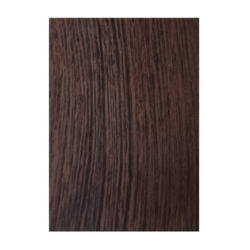Wenge

Family: Fabaceae / Millettieae - Order: Fabales - Class: Magnoliopsida
Scientific name: Millettia laurentii
Trade name: Wengé
Also
known as Wengè, Mpande, Dikela, Mibotu, Bokonge and Among
Origin:
Central Africa and southern regions of Tanzania, Mozambique, also in the
Republic of Congo.
Instrumental
uses:
Guitar back and sides,
fingerboards, bridges, head plates and bindings.
Tonal
properties:
Has
a kind of glassy tonal character, with tight bass and very good high frequency
response. Great note separation, very punchy with a good sustained and loud
sound.
Used
in bridges and fingerboards will help the transmission of resonance in all
frequencies by the characteristics of this wood.
The
grain is straight with a coarse texture and large Diffuse Porous pore
structure, providing great response properties.
The
wood is rather difficult to saw and work, glues well but need attention on the
finishing.
The wood is moderately
heavy, is very stiff and very resistant with an average
dried weight nearly of 54 lbs/ft3 or 870 kg/m3.
It is native from Central Africa
and southern regions of Tanzania, Mozambique, also in the Republic of Congo.
Millettia
laurentii is found in semi-deciduous, sometimes in periodically inundated
swampy forests.The tree reaches a height of 16 to 32 m. The bole is usually
straight, unbuttressed. The trunk diameter attains 100 cm.
The sapwood is whitish,
it has a thickness of 2 to 3 cm. The heartwood is yellowish brown toning down
to purplish brown, with pink-brown thin stripes, it is clearly demarcated.
CITES status
is unrestricted.
Is reported on
the IUCN Red List
as endangered.


